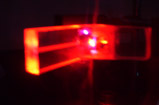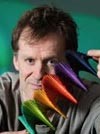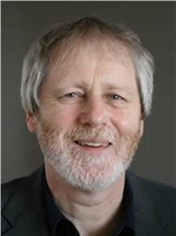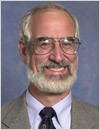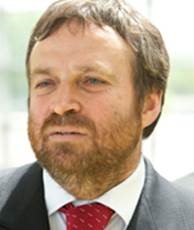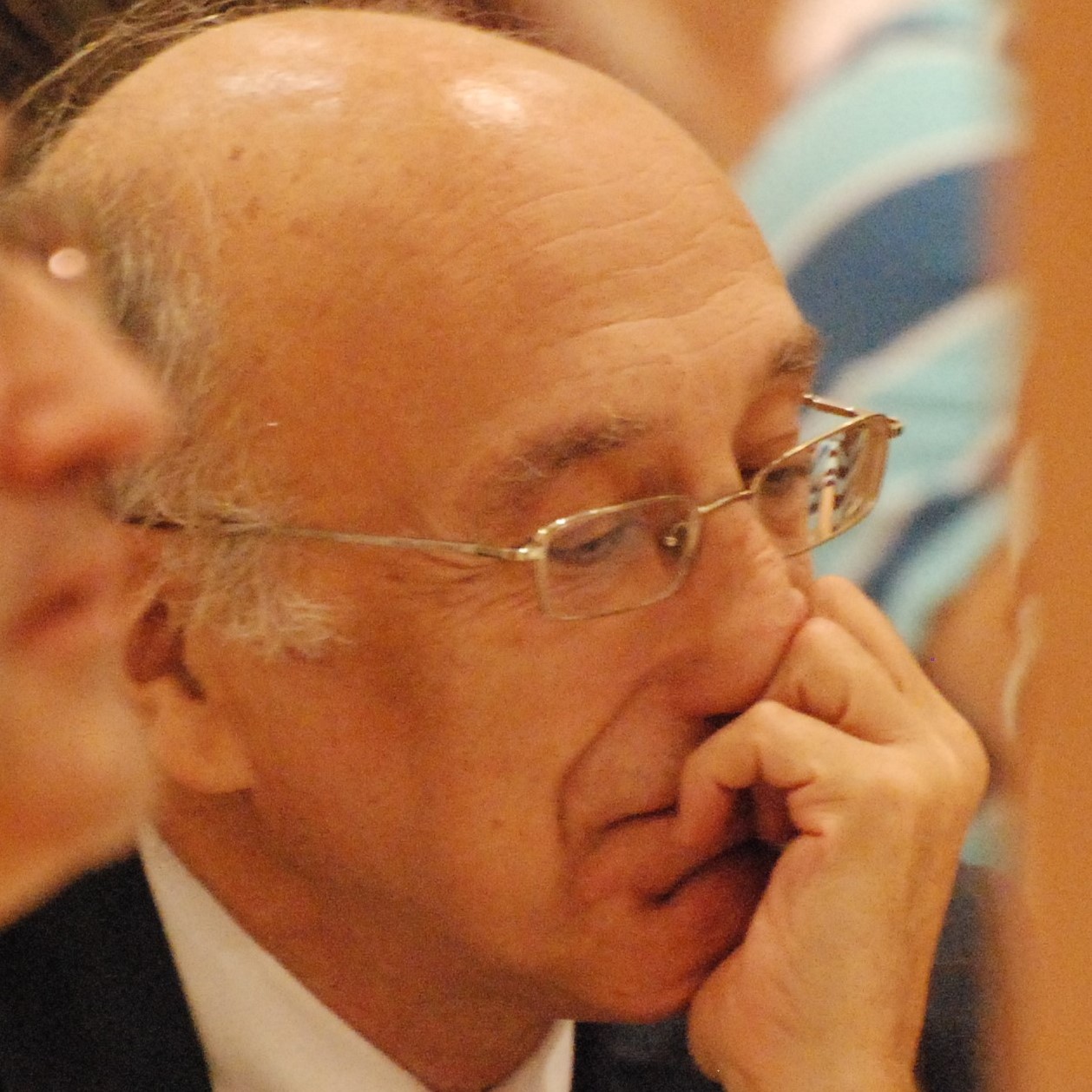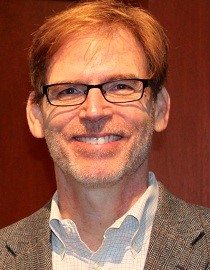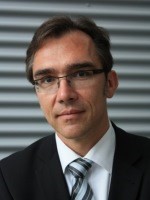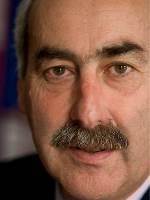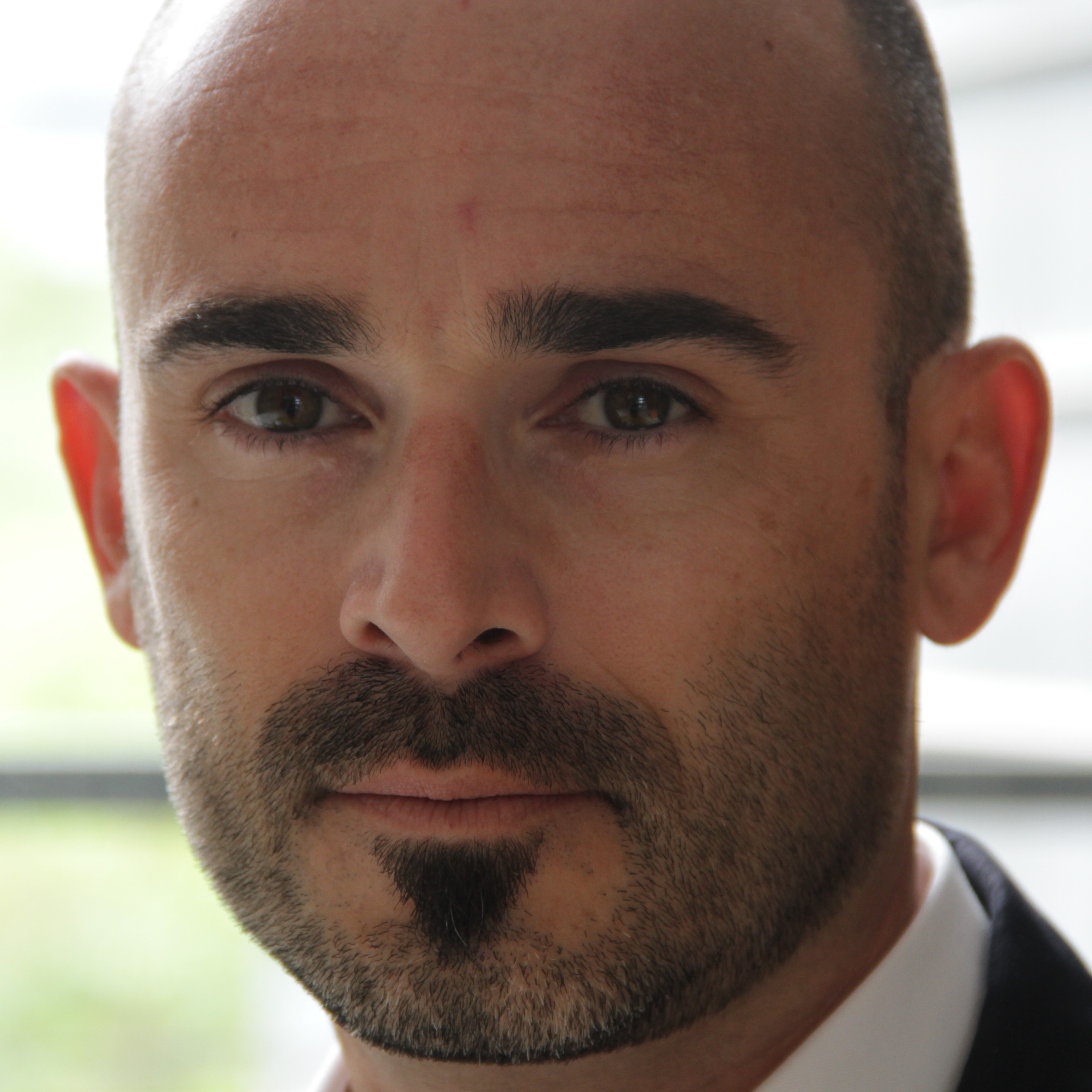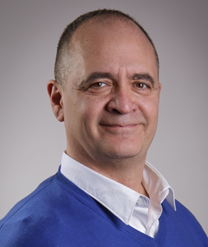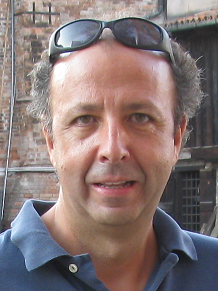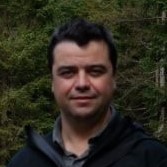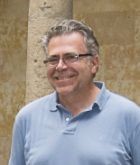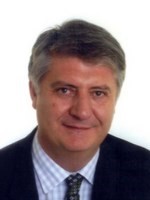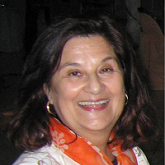Highly renowned Professionals and Scientists from the most prestigious Organizations will highlight the importance of the Photonics for a new world. Key trends and challenges will be identified in several areas of paramount importance.
Invited Speaker
|
Talk
|
Biography
|
|
Prof. Miles Padgett
Lead the Quantum Imaging Hub, UK
Vice-Principal for Research
University of Glasgow, UK
June 15: 11:00 h
Invited Talk |
Light’s Twist: an optical technology that matters
In 1992 Allen et al. recognized that light beams could carry an angular momentum much larger than the photon spin. This twist can be generated using lenses, or holograms encoded onto liquid crystal displays. Both whole beams and single photons can carry this twist, or transfer it to particles causing them to spin.
In this talk I will introduce the underlying properties and discuss a number of applications of optical angular momentum. The applications span new methods for micro-manipulation, novel imaging modalities, new types of laser and high-bandwidth communication in both the classical and quantum regimes. Our most recent work considers how a rotational form of the classical Doppler effect can by used to sense the rotation of distant bodies, even when the linear effect is zero.
These various applications and demonstrations by our own group and others highlight how, 350 years after Newton, optics remains a science for the 21st Century.
|
Prof. Padgett holds the Kelvin Chair of Natural Philosophy at the Univ. of Glasgow, Scotland. He leads the Quantum Imaging Hub, one of four Quantum Technology hubs in a UK network. In 2001, he was elected a Fellow of the Royal Society of Edinburgh (RSE) and in 2014 a Fellow of the Royal Society, the UK’s National Academy. In 2009, with Les Allen, he won the Inst. of Physics Young Medal and in 2014 the RSE Kelvin Medal. In 2015 he was awarded the Science of Light Prize from the European Physical Society. He is best known for his Group’s work in Optical Angular Momentum; Light’s Twist. |
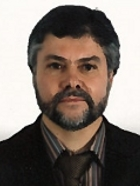
Prof. Jose Luis Santos
Associate Director of Faculty of Sciences of University of Porto
June 15: 12:00 h
Invited Talk
June 15: 16:00 h
Round Table |
Why photonics is essential for the sustainable development of the societies
Photonics deals with Light in a broad sense, not limited to the narrow spectral window where our eyes are effective receptors. Light has always been central in the unfolding of the human endeavor, impacting life elements that goes from the simple survival to the cultural and spiritual components of the Human reality. With the advent of the technology as a structural factor of our Civilization, the developments in this domain associated with Light have been in the core of remarkable progresses, as demonstrated by the worldwide optical communication network that sustains our information age, or when considering the myriad of breakthroughs that became possible with the Laser. It is understood this is only the beginning and unforeseeable Photonic technologies will be ahead, as already pointed out by recent developments in optical metamaterials and in optical quantum systems showing entangled effects. It shall be emphasized the importance of Light does not limit to the technologies that derive from it. Indeed, it has been progressively recognized the importance of the study of Light as a physical phenomenon, remarkably not so well understood as normally assumed. The question “What is Light?” is more actual than ever and the quest for its answer may reveal unexpected clues about persistent philosophical interrogations.
The talk will try to figure out the relevance of Light to the historical development of Science and Technology, to illustrate how nowadays Photonics is nuclear to the on-going of our Society, and looks for delivering some thoughts addressing the impact Light may have in the balanced growing and sustainability of the Human Civilization.
|
José Luis Santos received his Licenciatura in Physics from University of Porto, Portugal, and Ph.D. degree in Physics from the same University, benefiting from a collaboration with the University of Kent at Canterbury, UK.
He is currently Professor of Physics at the Physics and Astronomy Department of Faculty of Sciences of University of Porto, Portugal. He is also researcher of INESC Porto – Optoelectronics and Electronic Systems Unit.
Since 2010 he is Associate Director of Faculty of Sciences of University of Porto.
Optical fiber sensing is the main area of his research, with focus on interferometric and wavelength encoded devices. He is author or co-author of more than 200 scientific articles and co-author of 6 patents. |
|
Prof. Philip Russell
OSA 2015 President
Director Max Planck Institute for the Science of Light, Erlangen, Germany
June 15: 16:00 h
Round Table
June 16: 9:00 h
Invited Talk |
Optomechanical effects in microstructured fibres
Microstructured fibres are hair-thin strands of glass with a transverse microstructure (typically of hollow channels) running along their entire length. This microstructure permits remarkable control over the propagation of guided light, as well as introducing new possibilities for manipulating optomechanical interactions. In this paper two examples are discussed. In the first, light-driven GHz acoustic resonances in a photonic crystal fibre are used to realise unidirectional devices and generate frequency combs, as well as providing an elegant means of mode-locking fibre lasers at a very high harmonic of their fundamental repetition rate. In the second, a capillary fibre with two ~500 nm thick glass membranes spaced by ~500 nm and suspended across its bore, exhibits giant optomechanical gain and Raman-like self-pulsations when illuminated with only a few mW of CW laser light.
|
Prof. Russell is a founding Director at the Max-Planck Institute for the Science of Light (MPL), a position he has held since January 2009. He obtained his D.Phil. (1979) degree at the University of Oxford. His interests currently focus on scientific applications of photonic crystal fibres. He is a Fellow of the Royal Society and the Optical Society of America (OSA) and has won several awards including the 2000 OSA Joseph Fraunhofer Award/Robert M. Burley Prize, the 2005 Thomas Young Prize of the IOP, the 2005 Körber Prize for European Science, the 2013 EPS Prize for Research into the Science of Light, the 2014 Berthold Leibinger Zukunftspreis and the 2015 IEEE Photonics Award. He is OSA's President in 2015, the International Year of Light. |
|
Dr. R. Lieberman
SPIE 2015 Elect President
President of Lumoptics LLC, California, United States
June 15: 16:00 h
Round Table
June 16: 17:00 h
Invited Talk |
Light based technologies for a more healthy environmment
Photonic sensors for chemical, physical, and geological parameters have the potential to provide critical data on virtually every aspect of the energy cycle. This is particularly true for the world’s dominant energy source – hydrocarbon fuels. Development and deployment of photonic sensors can reduce the environmental disruption associated with exploration and extraction of oil and gas, and can help keep workers and residents near fuel production, storage, and transmission sites safe. Photonic sensors can increase the efficiency of power plants and automobiles, improving air quality, increasing availability of resources, and lowering costs to consumers (a 1% increase in would reduce global carbon dioxide emission by more than 370 million tonnes!). Optical methane and carbon monoxide detectors can significantly reduce the economic impact and loss of life from coal-mine disasters, and guard against catastrophic pipeline leaks. All of these improvements, and many more, can be accomplished using photonic sensor technology.
|
Dr. Lieberman is a high-tech executive with experience in corporate and technical management. Principal Investigator on projects for U.S. National Science Foundation, National Institutes of Health, Department of Energy, NASA, Department of Homeland Security, Department of Defense (DARPA, TSWG, Army, Navy, Air Force). Interested in science communication and policy: Organizer of numerous international scientific conferences, member of corporate boards, advisory committees, editorial boards, and project/proposal posal review boards.
His areas of expertise include technology management, spectroscopy/chemical detection, optical sensing and monitoring, and biophysics/biosensors.
He has been awarded with: President's Award, SPIE, 2008; Fellow, SPIE, 1997; Bell Laboratories Exceptional Contribution Awards: 1988, 1987, 1985; NASA Space Technology Award: 2004; NASA Tech Brief Awards: 2004, 2008. |
|
Prof. X.-C. Zhang
Director, The Institute of Optics,
University of Rochester, NY, USA
Optics Letters Editor-in-Chief
June 15: 16:00 h
Round Table
June 16: 16:00 h
Invited Talk |
Terahertz technologies for a more safe and healthy environment
Historically, terahertz wave (or T-ray) technologies were mainly used within the astronomy community for searching far-infrared radiation (cosmic background), and the laser fusion community for the diagnostics of plasmas. Since the first demonstration of THz wave time-domain spectroscopy in the late 80’s, there has been a series of significant advances (particularly in recent years) on the development of intense sources and sensitive detectors.
THz wave air photonics involves the interaction of intense femtosecond laser pulses with air. The air that we breathe is capable of generating and detecting broadband THz field. I will review THz wave air photonics, especially, I will explore the challenges and future opportunities for this rapidly evolving area of research that transcends the "gap" once existing between optics and electronics. I will also highlight their potentials, including remote sensing capability.
|
Prof. Zhang Parker Givens Chair of Optics, assumes Directorship of The Institute of Optics, University of Rochester, NY, a foremost institution in optics and optical physics research and education. With a BS (‘82) from Peking University, he earned the MS (‘83) and PhD degree (‘86) in Physics from Brown University, RI.
Dr. Zhang served as Editor-in-Chief of Optics Letters and Director-at-Large, OSA (‘14-‘16). He is a Fellow of AAAS, APS, IEEE, OSA, and SPIE. He holds 29 US patents, and is a prolific author and speaker.
His recent honors and awards include: IRMMW-THz Kenneth Button Prize (‘14); OSA William F. Meggers Award (‘12); Honorable Professor at Moscow State University (‘12), IEEE Photonics Society William Streifer Scientific Achievement Award (‘11); Rensselaer William H. Wiley 1866 Award (‘09). |
|
Prof. David Richardson
Deputy Director Optoelectronics Research Centre (ORC)
University of Southampton
Highfield, Southampton, United Kingdom
June 15: 16:00 h
Round Table
June 17:10:30 h
Invited Talk |
Advanced Fiber Technologies for Next Generation Optical Communications Systems
For the past 30 years communications research has focused on finding innovative ways of coding and multiplexing optical signals to unlock the maximum practical ~10bit/s/Hz spectral efficiency provided by single-mode optical fiber, enabling the internet as we know it today. However, cost-effective future scaling of network capacity may ultimately benefit from fiber solutions that can exploit multiple spatial modes within a single multimode-core, and/or multiple cores incorporated within the fiber cross-section to increase the per-fiber spectral efficiency. In this talk I will review progress towards realizing these new fiber types (along with the key component / subsystems required) and describe the necessary requirements for ultimate commercial deployment.
|
Prof. Richardson joined the Optoelectronics Research Centre (ORC) at Southampton University in 1989 and was awarded a Royal Society University Fellowship in 1991 in recognition of his pioneering work on short pulse fiber lasers. He is now a Deputy Director of the ORC with responsibility for fiber and laser related activities. His current research interests include: optical fiber communications, microstructured optical fibers and pulsed high-power fibre lasers. He has published more than 1000 conference and journal papers and produced more than 20 patents. Professor Richardson is a Fellow of the Institute of Electrical and Electronic Engineers, Optical Society of America, the Institute of Engineering and Technology and was made a Fellow of the Royal Academy of Engineering in 2009. |
|
Prof. José Antonio Martín Pereda
Universidad Politécnica de Madrid
Member of the Royal Academy of Engineering, Spain
June 15: 16:00 h
Round Table |
Round Table I: MODERATOR
Light sciences and technologies Impacts |
Prof. Martín Pereda was a Deputy Rector of Research at UPM (1980-1985), creating the “Photonic Technology” Department of UPM in 1985.
He was member of the TPC of ECOC and of OFC / I00C (1984-1996).
He was the first in Spain to work in the fields of optical communications and liquid crystal applications in photonic devices, working in these fields since 1975. He was a pioneer in the study of optical bistability and chaotic phenomena. He created the first Optical Communications school in Spain, introducing this field into the curricula of Telecommunications Engineering Schools in Spain (since 1980) and the first to introduce the concept of Photonics. He received several scientific prizes for research work and holds an “Honorary Doctorate” from the Polytechnic University of Catalonia. In 1994, he became a founding member of the Royal Spanish Academy of Engineering. |
|
Prof. Bruce J. Tromberg
Director Beckman Laser Institute and Medical Clinic, Laser Microbeam and Medical Program
University of California, Irvine, USA
June 16: 10:30 h
Invited Talk |
Cancer Imaging with Light
Optical methods can provide a single, scalable platform for medical imaging and therapy by manipulating the spatial, spectral, and temporal properties of advanced solid state laser light sources. This allows for control of optical path length, localization of light in tissue, and selection of new mechanisms for achieving image contrast and therapeutic selectivity. This talk introduces emerging Medical Optics technologies that provide unique information about tissue structure and biochemical composition spanning from micro- to macroscopic regimes. These capabilities will be placed in the context of conventional methods in order to assess the current and future role of optical imaging as an enabling, bedside technology in Cancer and personalized health care.
|
Prof. Tromberg is the Director of the Beckman Laser Institute and Medical Clinic (BLI) at the University of California, Irvine (UCI) and principal investigator of the Laser Microbeam and Medical Program (LAMMP), an NIH National Biomedical Technology Research Center. He is a Professor in the departments of Biomedical Engineering and Surgery, co-leads the Onco-imaging and Biotechnology Program in UCI’s Chao Family Comprehensive Cancer Center, and has been a member of the BLI faculty since 1990. His research interests are in the development of quantitative, broadband Biophotonics technologies for characterizing and imaging tissue structure, function and composition across spatial scales. He has pioneered model-based methods that utilize spatially and temporally modulated light sources for diffuse optical spectroscopy and imaging, non-linear optical microscopy, and multi-modality imaging. |
|
Prof. Jüergen Popp
Director Leibniz Institute of Photonic Technology;
Institute of Physical Chemistry & Abbe-Center of Photonics, Friedrich-Schiller University,
both in Jena, Germany
June 16: 11:30 h
Invited Talk |
Non-invasive Photonic micro-spectroscopic technologies for health care and medicine
Understanding the cause of diseases, early disease recognition, targeted disease treatment, predication of therapeutic response and monitoring treatment success; are the underlying principles of the vision associated with modern biomedicine. In the past years medical photonics has witnessed the development of optical / photonic approaches that are potentially in a position to meet these aforementioned challenges. In this context spectroscopic approaches like e.g. Raman spectroscopy are especially noteworthy. Here, we introduce into the application of non-invasive spectroscopic approaches with special emphasis on linear and non-linear Raman approaches for clinical diagnosis. We will present chip-based bacterial isolation strategies for a fast pathogen identification and the determination of their antibiotic resistances, which is crucial for patient’s survival. Moreover, we report about Raman on-chip approaches for the identification of circulating tumor cells and therapeutic drug monitoring. Furthermore, we introduce spectroscopic approaches for ex-vivo and in-vivo spectral histopathology for an early diagnosis of cancer.
|
Prof. Popp studied chemistry at the universities of Erlangen and Wuerzburg, Germany. After his PhD in Physical Chemistry, he joined Yale University for postdoctoral work. He subsequently returned to Wuerzburg University where he finished his habilitation in 2002. Since 2002, he holds a chair for Physical Chemistry at the Friedrich-Schiller University Jena. Furthermore, he is the Scientific Director of the Leibniz Institute of Photonic Technology, Jena, since 2006. His core research focus is biophotonics. Corner stones are the development and application of linear and non-linear Raman-technologies for clinical diagnosis. He has published more than 540 journal papers. In 2012, he received an honorary doctoral degree from Babeş-Bolyai University in Cluj-Napoca, Romania. Professor Jürgen Popp is the recipient of the 2013 Robert Kellner Lecture Award. |
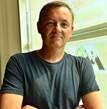
Prof. José Capmany
Director iTEAM Instute, Technical University of Valencia, Spain
June 17:11:30 h
Invited Talk
June 19: 9:30 h
Round Table |
Microwave Photonics: marrying the worlds of radiofrecuency and optics for future 5G communications and beyond
This talk will introduce the emerging field of Microwave Photonics (MWP) that brings together the worlds of radiofrequency engineering and optoelectronics. MWP deals with the generation, processing, and distribution of microwave and millimetre-wave signals by optical means benefiting from the unique advantages inherent to photonics, such as low loss, high bandwidth and immunity to electromagnetic interference On top of these, MWP brings the fundamental added value of enabling the realization of key functionalities such as reconfigurable filtering, arbitrary waveform generation, frequency up/down conversion and instantaneous measurement, which are either complex or even not directly possible in the radiofrequency domain. In addition, MWP creates new opportunities for information and communication (ICT) systems and networks.
The basic features of MWP will be addressed and the recent advances in integrated microwave photonics will be described putting special emphasis on their potential to sustain not only future fiber-wireless communications paradigms such as 5G but also to expand into other application fields such as sensing and biomedicine.
|
Prof. Capmany was born in Madrid, Spain, on December 15 1962. He received the Ingeniero de Telecomunicacion degree from the Universidad Politécnica de Madrid (UPM) in 1987 and the Licenciado en Ciencias Físicas in 2009. He holds a PhD in Electrical Engineering from UPM and a PhD in Quantum Physics from the Universidad de Vigo.
He is a full profesor of Photonics at the Universidad Politecnica de Valencia (UPV) the Director of the Institute of Telecommunications He has published over 450 papers in international refereed journals and conferences. Professor Capmany is the 2012 King James I Prize Laureate on novel technologies, the highest scientific distinction in Spain, for his outstanding contributions to the field of microwave photonics. He is a Fellow of IEEE and OSA and founder of the spin-off company VLC Photonics.
(www.vlcphotonics.com) dedicated to the design of photonic integrated circuits. |
|
Prof. J M López-Higuera
Head of Photonic Engineering Group, Universidad de Cantabria, Spain
June 17:16:00 h
Invited Talk |
Sensing Using Light
To increase the level and quality of people’s lives, and to help them in their current occupations, the measurement, monitoring, and control of magnitudes are obvious requirements. To achieve this, it is necessary to develop the capacity to capture, quantify and translate magnitudes, in any domain to another one (normally electrical). Sensors are the devices developed for carrying out these tasks.
The sensing device that uses light Sciences or Technologies on key specific part/s enabling measurand-modulations into some of the characteristics of light and, finally, recovering faithfully the measurand state is understood as photonic sensor.
Many different approaches can be identified and can be included in the”Sensing Using Light” (SuL) area that offers very important expectations of annual growths and strong socio-economic impacts in the present decade (2010-2020).
In the talk, after a mention of what it must be understood as Photonics field we will go into the sensing using light area including the particular cases of the sensors using fiber technologies (OFS). Several significant cases will be presented and discussed in the presentation.
|
Prof. López-Higuera is a Professor in Electronics and Photonics, the founder and head of the Photonics Engineering Group, University of Cantabria, Spain. He is a Member of a wide set of international Committees of Conferences, R&D Institutions, and Companies in the area of photonic sensing. His work focuses on optical sensor systems and instrumentations for any sector application. He has worked in wide ample of R&D&I projects, acting in more than 80 of them as manager.
He has contributed with more than 600 research publications including 17 patents closely related to optical and fiber techniques for sensors and instrumentations. . He has worked as an editor and co-author of four R&D international books, as a co-editor of several conference proceedings and magazines and he has been the director of 15 PhD theses. He is co-founder of three technology-based companies.
Prof. López-Higuera is a Fellow of OSA, Fellow of SPIE, Senior of IEEE and is a Member of the Royal Academy of Medicine of Cantabria. |
|
Prof. Romain Quindant
Head of Plasmon nano-optics group, ICFO- The Institute of Photonic Sciences, Barcelona, Spain
June 17: 17:00 h
Invited Talk |
Towards novel biomedical sensing tools based on the combination of light and nanotechnology
Two decades of extensive research in the field of nano-optics have shown that metallic nanostructures supporting localized surface plasmon resonances stand as ideal systems to control light and heat on the nanometer scale. These unique physical properties offer new opportunities in the field of biotechnologies for both early diagnostics and minimally invasive therapies. In this talk we review our recent activities in the development of novel biomedical sensing tools based on metallic nanostructures.
In particular we present an integrated analytical platform that combines the sensing capability of plasmonic antennas with advanced microfluidic technologies for the label-free multiplexed detection of protein cancer markers in blood. This platform enables parallel, real-time detection of several markers from a single drop of human blood and is currently tested for early diagnosis and treatment monitoring. Furthermore, we discuss how this technology can be extended to on-a-chip chiral sensing capable to detect the handiness of biomolecules with key application to pharmaceutical industry.
|
Prof. Quidant’s research focuses on the study of the optical properties of metal nano-structures, known as nanoplasmonics. The activities of his group cover both fundamental and applied research. The fundamental part of his work is mainly directed towards enhanced light/matter interaction for quantum optics. From a more applied viewpoint, his group investigates news strategies to control light and heat at the nanometer scale for biomedical applications, including early detection and photothermal therapy of cancer.
His research trajectory has been acknowledged by several national and international prizes among which the Fresnel prize from the European Physics Society (2009), the prizes of the City of Barcelona (2010) and the Fundació Príncep de Girona (2010) as well as the 2012 ICO prize from the International Commission for Optics. In 2010 he received a Starting Grant from the European Research Council (ERC) that was complemented by an ERC Proof-of-concept grant in 2011. Earlier this year, he has been awarded a consolidator ERC grant. |
|
Prof. Juan Carlos Miñano
Head of Optics Group ,CeDInt, Universidad Politécnica de Madrid, Spain
June 18:10:30 h
Invited Talk |
Non-imaging optics for renewable energy and lighting
Nonimaging Optics has almost exclusively been applied to energy related problems from its very beginning. We review two of these applications: Concentration Photovoltaics (CPV) and Solid State Lighting (SSL). In particular we focus on the applications of a particular design method to these fields. This design method is called SMS. Its applications have been successfully extended also to imaging problems.
|
Juan C. Miñano has been involved in optics research, since 1982. Since 1997 he has been Professor at the Universidad Politécnica de Madrid and since 2000 has collaborated with the company LPI as a Senior Scientist. In 2010 he was honoured with the A.E. Conrady Award of the International Society of Optics and Photonics SPIE “in recognition of his exceptional contributions in developing new design methods and devices in Nonimaging Optics”; and in 2014 with the Joseph Fraunhofer Award/Robert M. Burley Prize of the Optical Society of America “for discovery of exceptional new design methods and devices in both nonimaging and imaging optics over more than three decades, with special emphasis in freeform surface design”. He is Fellow of both societies. |
|
Prof. Carlos Algora
Head of the III-V Semiconductors Group, Instituto de Energía Solar, Universidad Politécnica de Madrid, Spain
June 18:11:30 h
Invited Talk |
Solar cells for efficiencies of 50% and beyond
Photovoltaic cumulative installed power reached 150 GWp in 2014 and it is expected to get the 500 GWp level by 2020. More than 90% of photovoltaic installations are based on silicon crystalline solar cells whose typical commercial efficiencies are around 15-18%. No substantial efficiency increases are expected because of physical limitations of silicon solar cells, this being a hurdle for future cost reduction of photovoltaic electricity.
On the other hand, multijunction solar cells based on III-V semiconductors exhibit commercial efficiencies of 40% and laboratory developments have already reached the absolute record efficiency of 46% in 2014. On the contrary to silicon solar cells, the efficiency of multijunction solar cells has much more room for increase. In fact, several architectures have been proposed to reach efficiencies of 50% and beyond what would be of paramount importance to produce photovoltaic electricity at prices below the produced from fossil sources. Accordingly, this talk will analyze the design, technology, performance, reliability and cost of III-V multijunction solar cells for efficiencies of 50% and beyond.
|
Prof. Algora received a B.Sc. degree in Physics in 1986 and a Ph.D. degree in Physics in 1990, both from the Universidad Complutense de Madrid, Spain. He joined the Solar Energy Institute of the Technical University of Madrid in 1985. He became Associate Professor in 1991 and since 2008 was appointed Full Professor. From 1996 he has been the head of the III-V Semiconductors Group devoted to the modelling, physics, technology, characterization and reliability of III-V solar cells. Together with his team he developed some World efficiency record concentrator cells. He has been the main researcher of more than 45 R&D projects including several EU and ESA projects. He has published more than 250 scientific papers. He has been the director of 10 doctoral theses. In 2009 he received the Research Prize of the Technical University of Madrid. He is the co-editor of the Handbook of Concentrator Photovoltaic Technology (Wiley) published in 2015. |
|
Prof. Carlos Molpeceres Alvarez
Head of the Advanced Laser-Based Manufacturing Group. Centro Laser, Universidad Politécnica de Madrid, Spain
June 18:16:00 h
Invited Talk |
Advanced laser based manufacturing
This talk presents a general overview of the current use of laser light for manufacturing in different strategic industrial sectors. After a short presentation of the different approaches in which laser light is currently used for laser material processing (additive and substractive methods, joining, forming, etc.), the talk discusses in a greater depth a number of advanced techniques (Laser Induced Forward Transfer, Two Photon Polymerization, Laser Shock Processing, Advances Texturing Techniques for Surface Functionalization, etc.) whose potential impact in different industrial sectors in the short and medium term is huge. As a particular example of how this tool can completely change the manufacturing processes in a particular industrial field, the presentation includes a discussion about the impact that laser technology is having in the photovoltaic industry and, in particular, the solutions that laser manufacturing offers for High Efficiency Solar Cells fabrication.
|
Prof. Molpeceres (1966) is MSc (1990) by the Universidad Autónoma de Madrid and PhD (1997) by the Technical University of Madrid (UPM). Now he is Full Professor at the Department of Applied Physics and Materials Engineering at ETSII-UPM. He has been Technical Director of the Laser Center UPM from 1998 to 2011, and currently he leads the Group of Advanced Laser-Based Manufacturing. His current research activities include laser processing of materials at micro and nanoscale for applications in energy, biotechnology and other strategic sectors. |
|
Prof. Luis Roso
Director of Centro de Láseres Pulsados, Salamanca, Spain.
June 18:17:00 h
Invited Talk
June 19: 9:30 h
Round Table |
Ultrafast and ultraintense laser based disruptive applications
Since the discovery of laser in 1960, scientists have been trying to get higher and higher intensities. By 1980 terawatt lasers seem really tera-lasers (tera stands for the Greek name of monster) in the sense that they were monster lasers. By 1985, Mourou and Strickland, at that time at the University of Rochester, NY, opened the way of a new technology called CPA (Chirped Pulse Amplification) that allowed the development of compact Terawatt lasers. At that time, just to remark the “non-monster” character of those systems, they were named as T3 lasers (from Table-Top Terawatt) stressing the possibility to fit the terawatt laser on top of an optical table and not a whole building. Now Terawatt lasers became a “common” tool and they are opening a brand new set of unexpected possibilities. This talk will analyse the present and the future of such extremely non-linear applications. Have you ever thought in having a Terawatt laser at home?
|
Prof. Roso born in Barcelona, Spain, December 1955.
- Graduate in Physics and Mathematics in 1977 (simultaneously) at the Universitat de Barcelona
- PhD in Physics at Universitat Autònoma de Barcelona in 1982, advisor Prof. Ramón Corbalán.
- Profesor Titular Numerario at the Universidad Autónoma de Barcelona from 1985
- Visiting Scholar at the University of Rochester, Rochester, New York, in 1985 and 86, at the time where Chirped Pulse Amplification technology was developed.
- Catedrático (Full Professor) at the Universidad de Salamanca from 1991
- Director of CLPU since September 2008, and promoter of its creation . The Pulsed Lasers Centre (Centro de Láseres Pulsados, CLPU) is the Spanish facility specialized in femtosecond laser pulses with peak powers at Terawatt and Petawatt levels. CLPU is opened to national and international users.
… and, over all, an enthusiastic about Physics, with more than 200 scientific papers published, for the moment. |
|
Prof. Maria J. Yzuel
Presidenta Comité español del Año Internacional de la luz 2015, Former Pass President of SPIE, Spain.
June 19: 9:30 h
Round Table |
Round Table II:
Education, training and Research on light based sciences and technologies |
Prof. Yzuel has been a Professor of Optics at the Department of Physics being in the currents a Professor Emeritus at Universidad Autónoma de Barcelona (UAB), Spain. She has published more than 300 scientific papers and supervised 20 Ph. D. Thesis.
Dr. Yzuel was the SPIE 2009 President and served in the SPIE Board of Directors from 2001 to 2003 and from 2007 to 2011. She served as Secretary General of the European Optical Society (EOS), as President of SEDOPTICA from 1993 to 1996 and she was Vice President of the Royal Spanish Physical Society (2007-2011. She is a member of the Royal Academy of Sciences and Arts of Barcelona, Spain. She is Fellow member of the OSA, SPIE, IOP, the EOS and Socia de Honor of SEDOPTICA and of the Royal Spanish Physical Society. She received the SPIE Board of Directors Award in 2005 and the Medal of the University of Warsaw (2005).). She received the Doctor Honoris Causa from the University Miguel Hernandez, Elche, Spain in 2010. In 2013 she received the high recognition of Commander of the Civil Order of Alfonso X the Wise from the Spanish Ministry of Education. She has received the 2014-Medal of Physics given by the Spanish Royal Society and the BBVA Foundation. |
|
Prof. Manuel López-Amo
Head Optical-Communications Group Universidad Pública de Navarra Campus, Pamplona, Spain.
June 19: 9:30 h
Round Table |
Round Table II:
Education, training and Research on light based sciences and technologies |
Prof. Lopez-Amo is a full professor in photonics at the Electrical and Electronic department of Universidad Pública de Navarra (Spain) since 1996. He is the head of the optical communications group of this department. He has been Chairman of the Optoelectronic Committee of Spain. He has been the director of the Engineering Faculty and of the Electrical and Electronic department of Universidad Pública de Navarra. He has been the leader of more than 50 research projects and he has coauthored more than 250 works in international refereed journals and conferences related with fiber-optic networks, fiber-optic sensors, fiber-optic amplifiers and lasers and integrated optics. He is a member of more than 20 international Committees of Conferences, being the technical chair of the last International Conference on fiber optic sensors (OFS 2014). He has supervised 15 PhD theses about Photonics. He has received among others, the Archimedes prize of the Ministry of education and science of Spain |
|
Prof. Maria Luisa Calvo
Vicepresidenta, Real Sociedad Española de Física (RSEF), Universidad Complutense de Madrid, Spain
June 19: 9:30 h
Round Table |
Round Table II: MODERATOR
Education, training and Research on light based sciences and technologies
|
Prof. Calvo is an Emeritus Professor, Complutense University of Madrid (Spain), Faculty of Physics. She initiated research at CNRS (Paris, France). She is leading the Interdisciplinary Group for Optical Computing (GICO-UCM). She investigates in light scattering, photonic devices, and holography. She has relevant contributions in new holographic photomaterials. She is the author of more than 150 scientific publications. She teaches general and specialized courses in optics and master degree. She is concerned with young researchers education, professional issues and career in Optics and Photonics. She collaborates with the Abdus Salam International Center for Theoretical Physics (ICTP, Italy). She was Vice-president of International Commission for Optics (ICO) (1999-2002), Secretary-General (2002-2005, 2005-2008) and President of ICO (2008-2011). She is Vice-President of the Spanish Physics Society (RSEF). |
|
 Program
Program  Program
Program 



